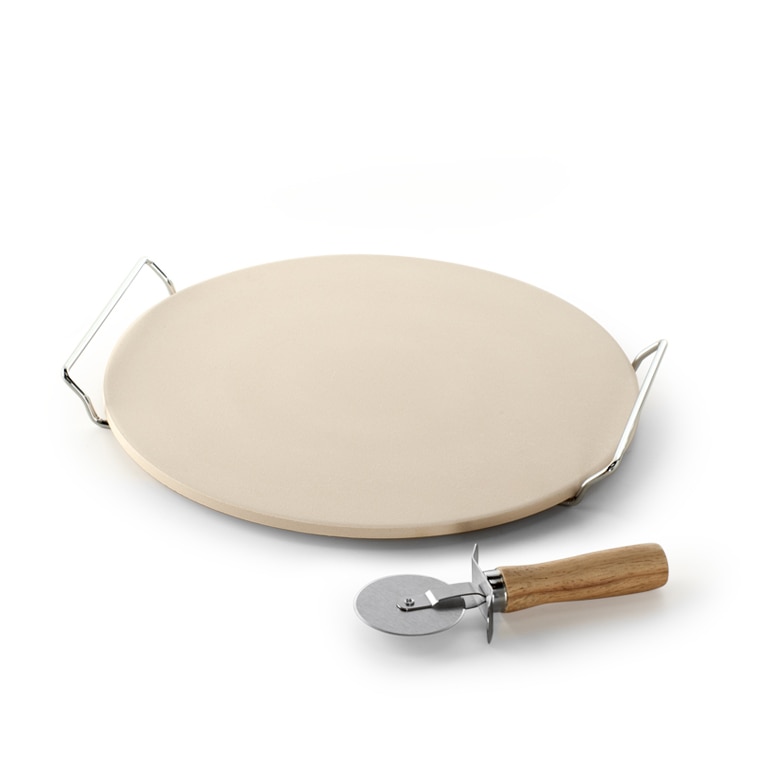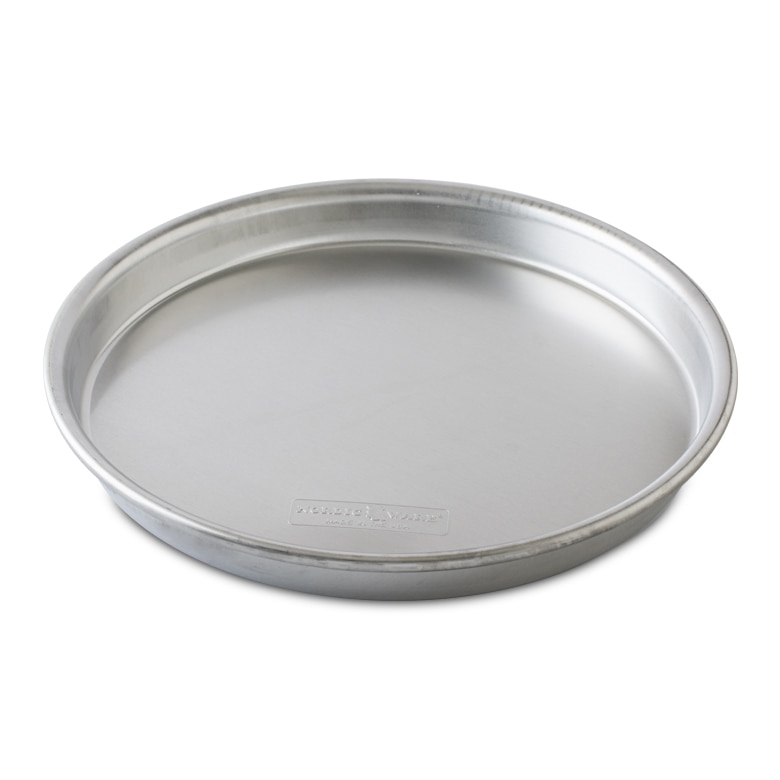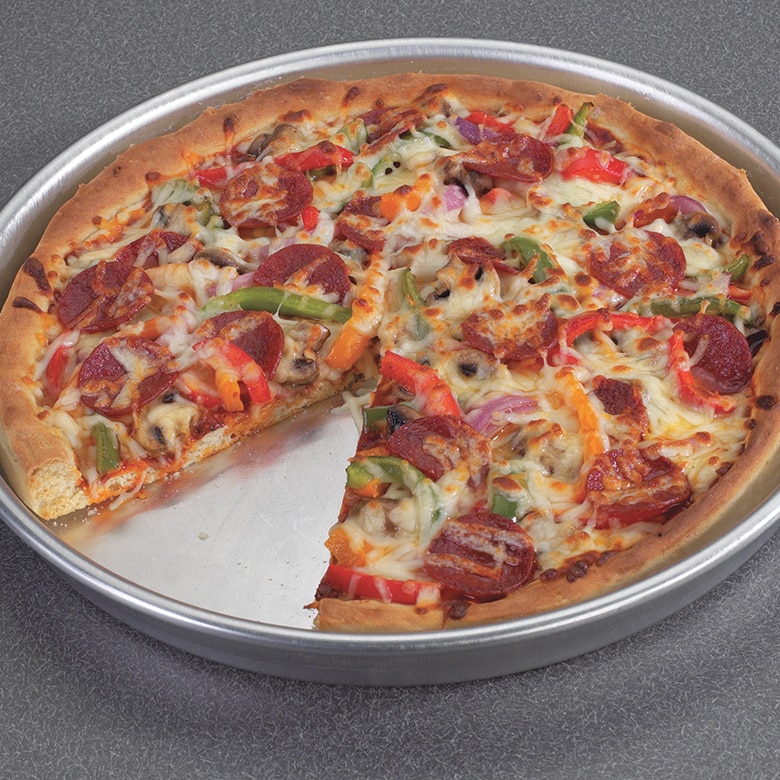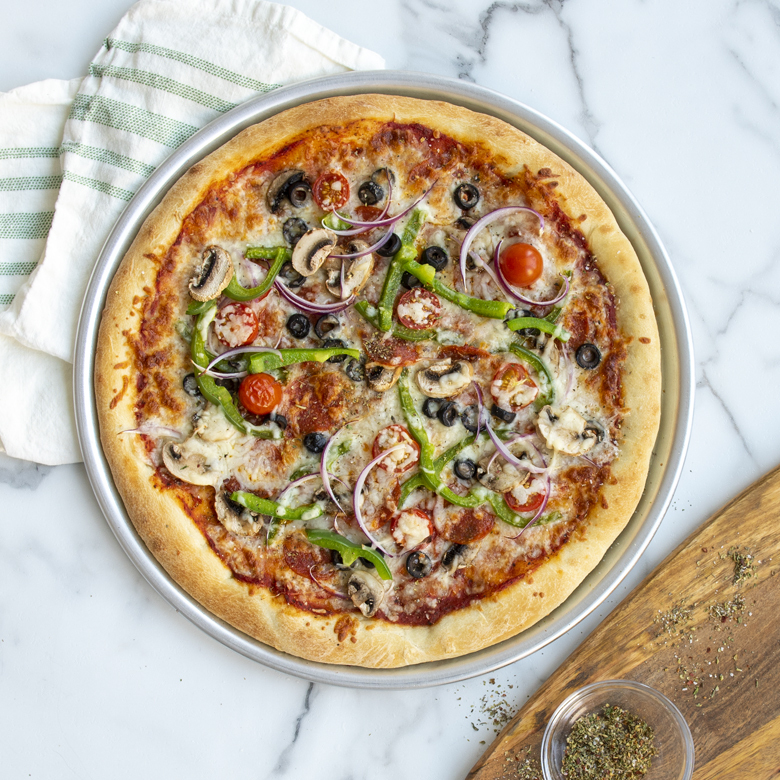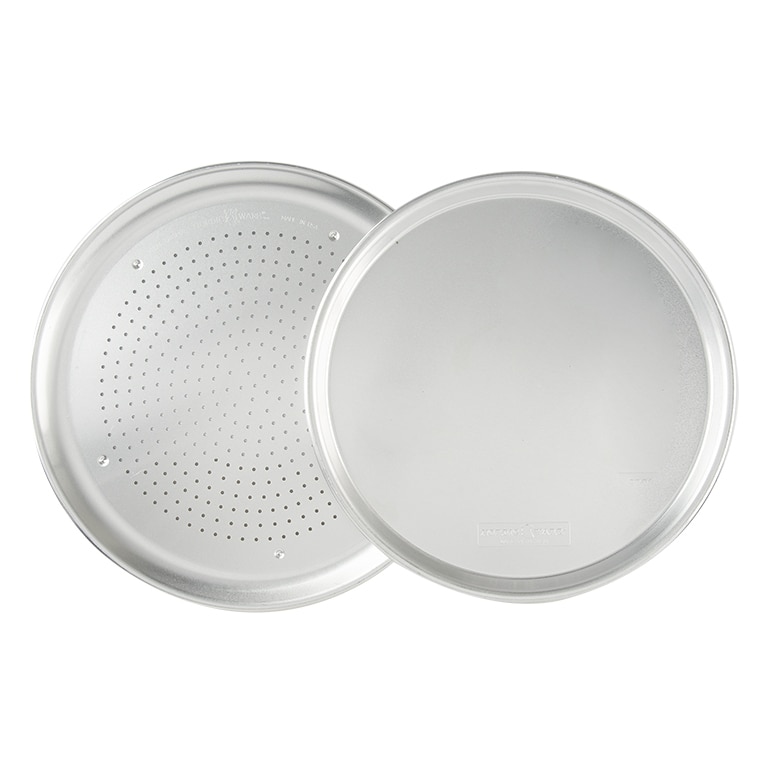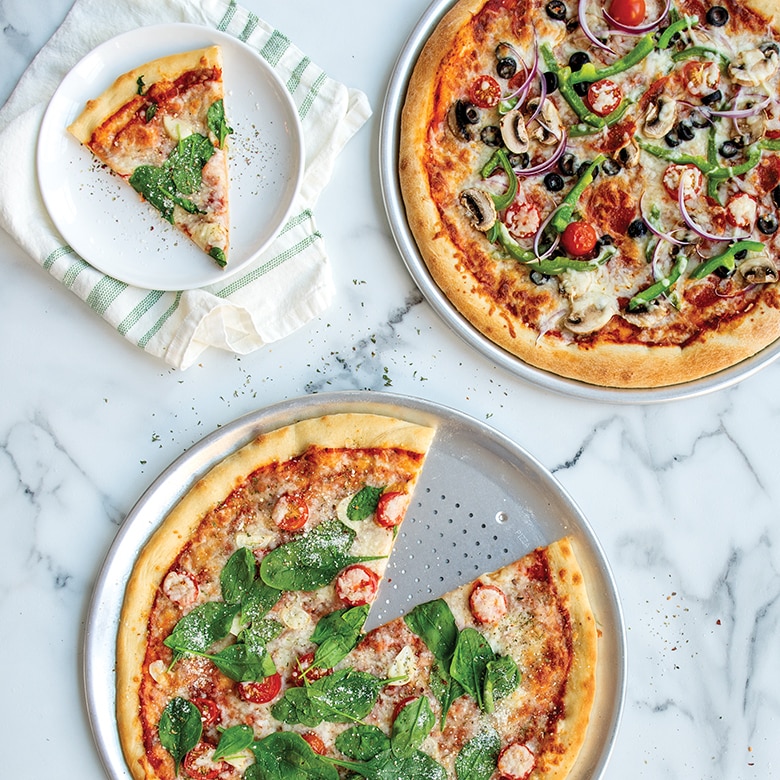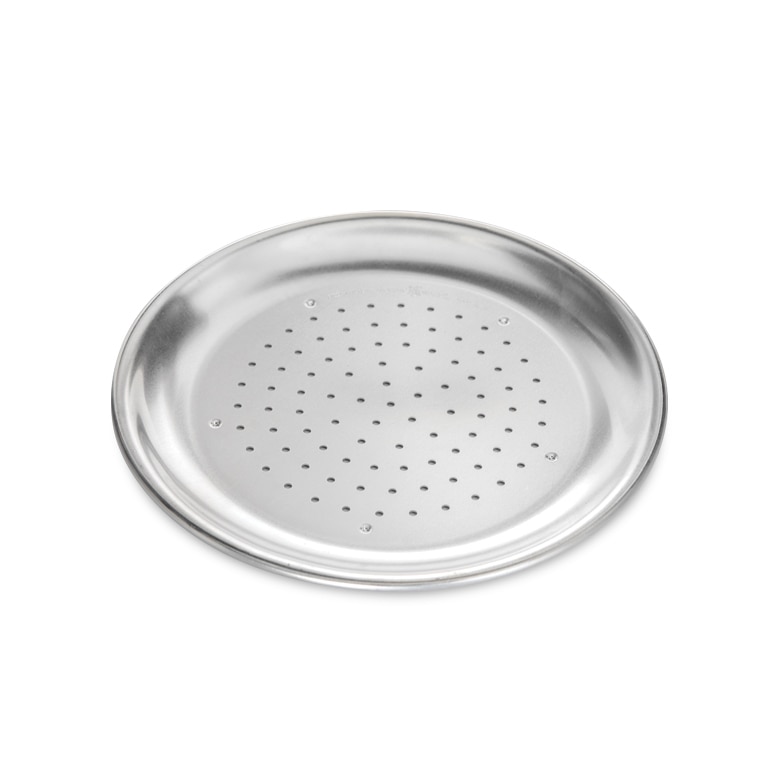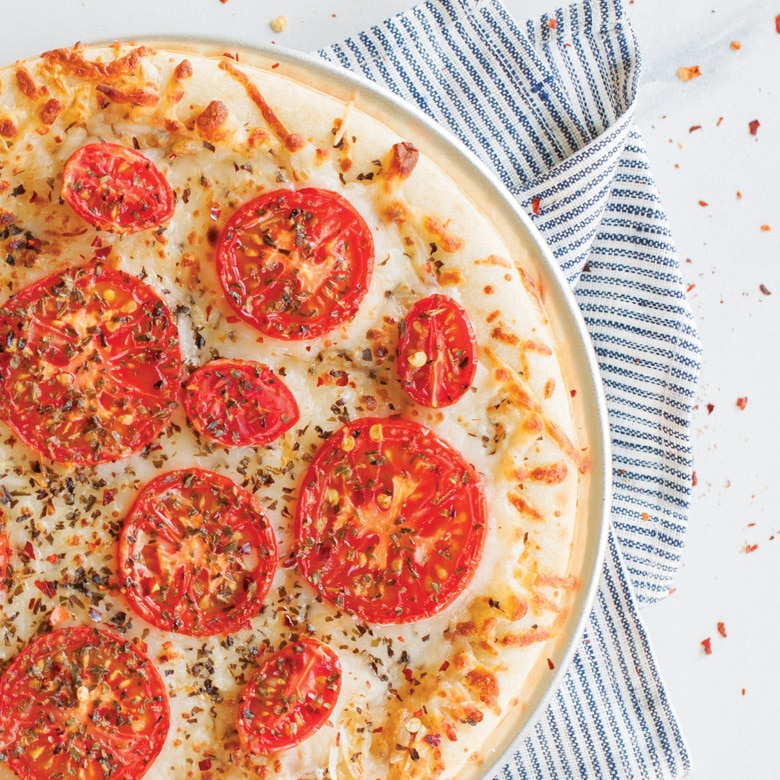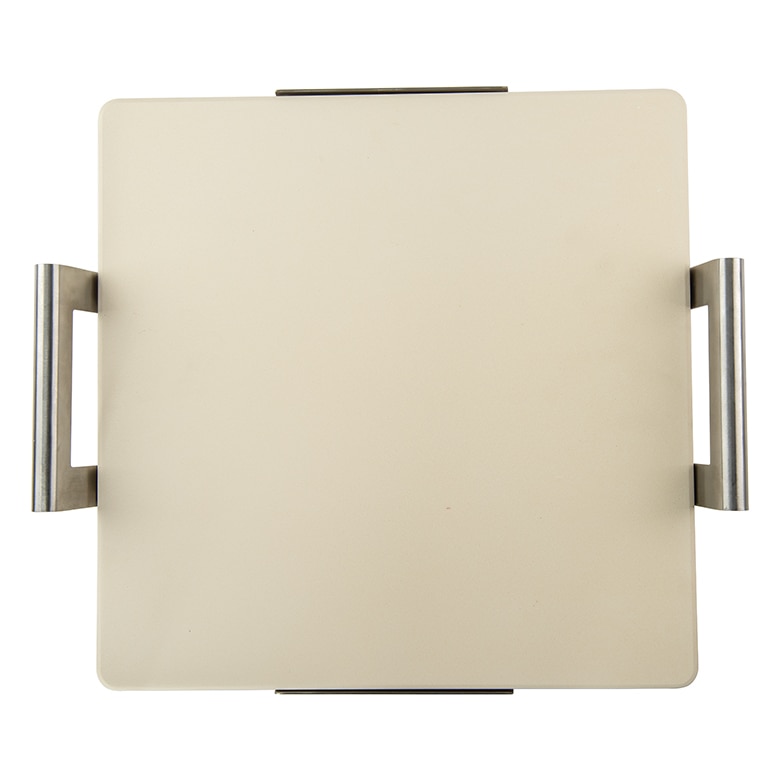Nordic Ware’s pizza pans are designed for durability, excellent heat distribution, and reliable performance. Made from high-quality aluminum or aluminized steel, they resist warping and ensure even baking for crispy, golden crusts. Many feature perforations for better airflow and quicker crisping. Proudly made in the USA, these pans are built to last and trusted by home cooks and professionals alike.
A pizza pan with holes (also called a perforated pizza pan or hot air pizza crisper) promotes better airflow, helping the crust bake evenly and become crispier. It’s great for thin-crust pizzas or when you want a crunchier texture. A solid pizza pan retains more moisture, making it ideal for softer, thicker crusts. The best choice depends on the type of pizza you prefer!
It depends on the type of crust you’re making. For traditional dough, lightly greasing the pan or sprinkling it with cornmeal helps prevent sticking and adds a bit of texture. If using a perforated pan or pre-made crust, greasing is usually unnecessary. Always follow your recipe for the best results.
Hand washing with warm, soapy water is recommended to maintain the pan’s quality. Avoid abrasive scrubbers or metal utensils that can scratch the surface. If food residue sticks, soak the pan briefly before cleaning. Dry thoroughly after washing to prevent water spots and extend the pan’s lifespan.
Using a pizza pan helps evenly distribute heat and prevents messes in the oven. A perforated pan enhances crispiness, while a solid pan retains moisture for a softer crust. Placing pizza directly on the oven rack can produce a crispier bottom but may allow cheese or toppings to drip. A pan is often the better choice for convenience and consistency.
Pizza stones absorb and distribute heat evenly, mimicking the effect of a traditional brick oven. As the stone heats up, it pulls moisture from the dough, creating a crispier crust. Preheating the stone before baking helps maintain a consistent temperature, ensuring even cooking. The retained heat also keeps pizza warm longer after it’s removed from the oven.
Yes, preheating a pizza stone is essential for the best results. A hot stone helps create a crisp, evenly baked crust by starting the cooking process immediately upon contact. Place the stone in a cold oven and let it heat up as the oven preheats—this prevents thermal shock, which can cause cracking. For optimal performance, preheat the stone

